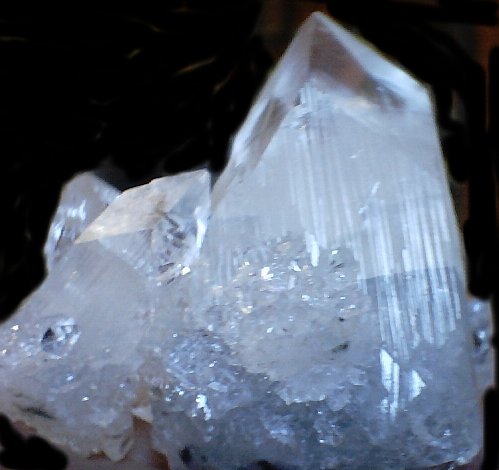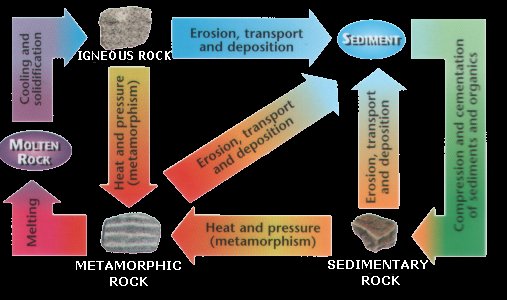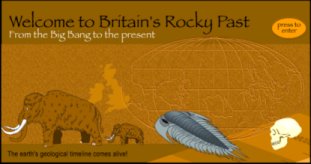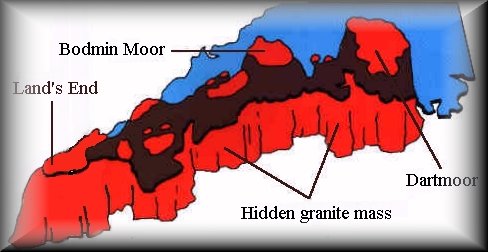ROCKS, MINERALS and FOSSILS
| I've been a casual rock collector for some time - but have recently begun to collect with more vigour! These are some of the stones currently in my possession (scanned or digitally photographed). Some of these are tumbled stones; others raw, rough material. It's very difficult to accurately convey the colours of these specimens, using these methods - and, in most case, the colour is "faded" - therefore, try to imagine them brighter and, in a lot of cases, darker!! I am only interested in gems, minerals and fossils for their aesthetic qualities and also by their geological aspects. However, I include healing properties in each write-up as I realise others might be interested in them. |  |
First! Some lessons!!
What is GEOLOGY? Geology is simply the study of the earth. Physical geology is the study of the earth's composition and the forces that shape the earth's surface. Historical geology is the study of the earth's history and the evolution of land and life forms.
The Structure of the Earth The earth is essentially a large rock with a hot, molten central core. Chemical reactions at the sun-like core produce heat and keep the surrounding rock liquified. The molten rock cools and solidifies away from the hot core and forms a hard crust at the earth's surface. The crust of rock on the surface of the earth is 15-40 miles thick (24-64 km). It is composed of a number of large rock plates - called tectonic plates - that are squeezed together tightly and held in place by the planet's gravity. The plates 'float' on the softer inner crust and are constantly moving and shifting against each other. Where the plates push together, mountain ranges form. When they slide against each other, earthquakes happen. Volcanoes indicate places where cracks, called 'fissures', allow molten rock to rise from the hot core of the planet to the surface. The Rock Cycle
While most people think of rocks as static, inanimate objects, they have a dynamic 'life' cycle and undergo continual transformation.

What are ROCKS?
Rocks are the hard part of the earth and range in size from sand grains to pebbles, stones, boulders, mountains, islands and continents. Rocks are made up of variable mixtures of mostly inorganic minerals that are bound together in a variety of ways.
The earth produces rocks in three different ways.
Igneous Rocks
Igneous rocks are formed when molten rock is either ejected directly onto the earth's surface (extrusive rock) or pushes up near the surface and cools beneath it (intrusive rock). Examples of extrusive igneous rocks: obsidian, basalt, pumice. Examples of intrusive igneous rocks: granite, gabbro, granite porphyry. Molten rock beneath the earth's crust is called magma, when magma is ejected through the crust it is called lava.
Sedimentary Rocks
Sedimentary rocks are composed of small bits of rock (mud, sand, gravel) and sometimes plants and/or animals, that become 'cemented' together in layers over time. Examples: mudstone (shale), sandstone, limestone.
Metamorphic Rocks
Metamorphic rocks are created when existing igneous or sedimentary rocks are squashed, stretched and/or cooked and change their appearance and mineral composition. Examples: gneiss, quartzite, slate, mica schist, marble.
What are MINERALS?
Minerals are solid substances that make up the rocks in the earth's crust. Each mineral is composed of a unique combination of one or more chemicals. Quartz, for example, is always made up of the chemical elements silicon and oxygen and there is always one atom of silicon for every two of oxygen. Of the 92 elements found in the earth's crust, eight account for about 98% of the crust weight - O, oxygen (46%), Si, silicon (28%), Al, aluminium (8%), Fe, iron (5%), Ca, calcium (3.6%), Sn, sodium (2.8%), K, potassium (2.6%), and Mg, magnesium (2%).
Minerals can be generally classified into two broad groups:
1. Metallic minerals - includes pure metals, such as silver, or compounds containing metals, like ores. Rocks containing enough useful minerals to make them commercially valuable are known as ores. Metallic minerals are usually extracted by crushing rocks and heating them until the metal flows out. Examples of Metallic minerals are silver, gold, copper, sphalerite, pyrite, magnetite, galena, limonite and hematite;
and
2. Non-Metallic minerals. Examples: quartz, mica, calcite, suphur, graphite, dolomite, tourmaline, gypsum, talc.
Minerals can be identified by noting the following characteristics:
1. Colour. What colour is it? Is it opaque or translucent?
2. Lustre. Is it shiny or dull? Does it have a metallic or non-metallic lustre?
3. Texture. Is it smooth, bumpy, sugary or jagged?
4. Hardness. The Mohs' Hardness Scale ranks the hardness of minerals from 1-10 with talc being the softest and diamond being the hardest. You can test the hardness of some minerals by scratching them with common items like a fingernail (hardness (H) of 2.5), a penny (H=3), a piece of glass or a knife (H=5.5) and a steel file (H=6.5).
5. Crystalline Structure. Does it have a crystal shape? How many sides does the crystal have? Are they smooth or grooved on the outside? Are they long and slender or stubby?
6. Specific Gravity. Is it unusually heavy or light?
7. Streak. What is the colour of the mineral when it is ground into a powder? Streaks of many minerals can be tested in the field by rubbing them on a peice of unglazed porcelain.
For example, gold is described as a golden yellow, opaque mineral with a metallic lustre and a hardness of 2.5-3. Its crystals are cube-shaped, but gold typically occurs as grains, flakes or a wiry mass. It is unusually heavy (specific gravity of 19.3) and has a golden yellow streak.
What are GEMSTONES?
Most gemstones are rare minerals used in jewellery and ornaments. The only non-mineral substances considered gems are amber (fossilised tree resin), coral (fossilised sea creatures) and pearl (formed in oysters). Most gemstones are formed as a result of intense heat and pressure inside the earth and are found in igneous and metamorphic rocks. When mined, gemstones typically have a rough texture. Skilled artists cut, shape and polish gemstones to create jewels and gems. Most gemstones aren't perfect enough to be made into jewels and are put into a variety of other uses. Diamonds, for example, which are the hardest substance on earth and can be sharpened finer than a razor, are used in industrial tools ranging from oil field drills to surgical instruments.
What are FOSSILS?
Fossils are the preserved remains of animals and plants that died long ago. In most cases, the hard parts of the organism (like teeth, bones and wood) become infused with minerals, making them rock-like. Fossils preserve the imprints of organisms in stone for thousands to hundreds of millions of years.

AMAZING Animation of Britain's Rocky Past + An Interactive Timeline from the BBC - check it out!
(you need the Flash plugin for this - downloadable from here)
.

The huge granite mass (batholith) under South West England
Geology Links
(I am currently studying Geology with the Open University and these links are primarily short cuts for myself - however you might find them of interest. More general links towards Rocks, Minerals and Fossils can be found here).* Actually, I have now finished my Geology course (awaiting exam results!) - check out the progress on here)

Northern Geological Supplies
An enormous range of rocks, fossils and minerals for sale!

The BGS aims to advance geoscientific knowledge of the United Kingdom and its adjacent continental shelf. It carries out systematic surveying and data collection, long-term monitoring and high-quality research, and provides geoscientific information, advice and services which meet the needs of customers in the industrial, engineering, governmental and scientific communities of the UK and overseas. Its work relates directly to mineral, energy and groundwater resources, land use, geological hazards, and the protection of the environment. The site includes an index of data sets produced by the BGS.
Part of Blackwell Science's earth science web site which summarises some of the geological stories that have appeared in both the national press and in journals such as Science and Nature. The items (except those extracted from Geology Today) have been written and compiled by Steve Drury, Department of Earth Sciences, the Open University.
The UK's national geological learned society and the professional body for UK geoscientists. It exists to promote the geosciences and the professional interests of UK geoscientists. Details of meetings and publications are available on this site. The "teaching resources" link has information on many web resources in areas such as fossils, dinosaurs, volcanoes, earthquakes, plate tectonics and structural geology. The site is fully searchable by subject.
List of U.S. and global links to main geological societies and surveys. Produced by the University of California at Berkeley Library.
Houghton Mifflin are publishers of Geology and Essentials of Geology, and this site is a public forum for all matters geological. Open to students, university instructors, professional geologists, and anyone seeking insight into the world’s daily geological matters. Includes explanations of basic concepts, news items, a ‘virtual classroom’ of resources, ‘virtual field trips’ and a glossary of geological terms.
Brilliant!
Formed in 1972, the OUGS is the third largest professional or amateur geological organisation in the United Kingdom and certainly the largest student geological society. The OUGS organises field trips as well as lectures, revision events, conservation and other activities. With links to branches and membership details
THE PALEOGEOGRAPHIC ATLAS PROJECT UNIVERSITY OF CHICAGO
The Project team, based at the University of Chicago, interpret paleogeography to include all aspects of map reconstruction from paleo-continental orientations and tectonic considerations to the delineation of past topographic or bathymetric contours and the compilation of lithofacies data. The reconstructions are used as basic information for studies of past fossil distributions, and for climatic or oceanographic patterns as determined from the fossils, the sediments and from computer modelling studies. Information has been compiled mainly from the literature on all aspects of global paleogeography and the team has pioneered the application of computer technology to paleogeographic map-making. Site includes movies, slideshows and maps, many of which require Quicktime software or Adobe Acrobat to read.
The USGS is an independent fact-finding agency that collects, monitors, analyses, and provides scientific understanding about natural resource conditions, issues, and problems. The agency carries out studies on a national scale and undertakes long-term monitoring and assessment of natural resources. The site gives biological, geological, mineral and water information for all US states. It also provides information on natural disasters that have occurred. Some of the reports require a Shockwave plugin. The site is searchable.
A searchable directory, set up by NASA, of images, visualisations and animations of the Earth, as seen from satellites. Includes sections on agriculture, land surfaces and views from different locations on the Globe.
Thin sections, as seen under a petrological microscope
| Click below if you'd like to chat or leave a message. |









